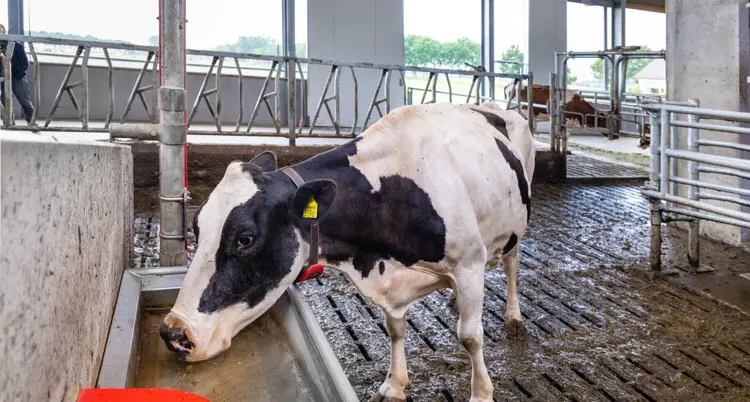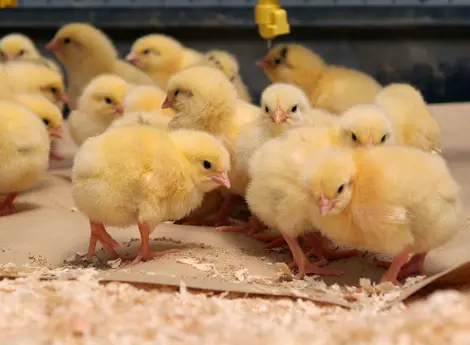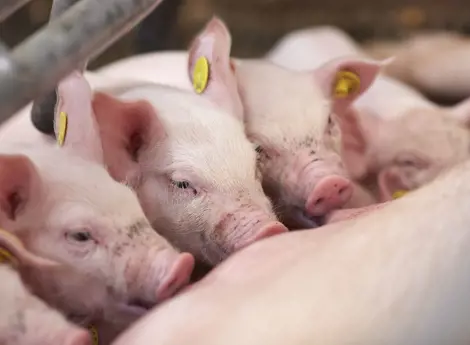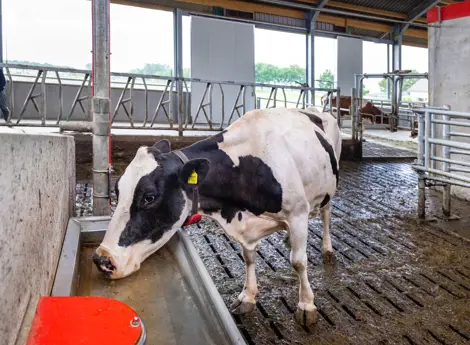Water: The forgotten nutrient that keeps your cattle healthy
Water is an important nutrient for animals, supporting multiple physiological processes. As well as a healthy metabolism, it enables the transportation of nutrients around the body and plays an important role in heat regulation. Meat and milk are also largely made up of water.

As a farmer, ensuring your animals have enough good quality drinking water is essential for good performance. Water quality can be assessed in several ways. Once the water quality of the source is determined to be good, specific attention must be paid to potential biofilm development in water pipes, which can impact water quality. The tips below will help you keep your animals’ water clean and hygienic.
In dairy cattle, water intake depends on milk production, which in turn depends on water intake. Providing your cows with enough water troughs with clean water is crucial. Water demand measured in litres increases more than the milk production in litres. As a rule of thumb, the ratio between water intake and milk production is 3.5 to 1.0, meaning that at least 140 litres of water are needed to produce 40 litres of milk. During heat stress, water intake is higher. In beef cattle, a lack of appropriate water supply will reduce water intake, and consequently dry matter intake and growth.
Assessing water quality
Ensuring optimal water quality is important to keep animals healthy and ensure optimal performance. This can be assessed through four different means: visual, sensory (taste/smell), chemical analysis and microbiological analysis. Make sure to test water from the source and at the end of the drinking pipes, as differences can often be observed between both samples.
A visual and sensory assessment is a quick and easy way to obtain an initial indication of your farm’s water quality. It is best done at the place where the animals drink, preferably at the end of the drinking system. In practice, the water quality at the source often differs from that at the watering point or trough. After draining, let the water rest in a bucket or transparent glass for a few minutes and watch for signs of precipitation at the bottom. If the water has a different smell, colour, or taste, then further examination of the drinking water system is necessary.
Chemical analysis indicates whether the water meets the standards for the animal category concerned. In addition to pH and hardness, the content of minerals determines whether the water is suitable. Abnormal levels can negatively affect taste. In addition, overly high levels can cause deposits to form in the system, reducing water supply yields, while excessive concentrations of certain minerals can obstruct the absorption of some others.
Microbiological analysis shows the number of microorganisms at the time of sampling. With an increased concentration of microorganisms, it is important to determine the type of organisms by undertaking a comprehensive analysis. If you find higher levels of microorganisms than are suitable for the animal category, it is necessary to identify the cause of the contamination and take appropriate action. A microbiological contamination is often formed after the water is pumped from the source, as deposits of minerals and organic residues in water pipes (known as biofilm) are an excellent breeding ground for microorganisms. These residues enable germs such as salmonella and E. coli to survive, grow and infect the animals through the drinking water, even when the source water is of sufficient quality.
The importance of regular assessment
It is important to frequently analyse water quality at different points within the system, so that you know the status of the quality of drinking water. To prevent microbiological infections, you should clean the drinking water system regularly.
Tips and recommendations for cattle
Drinking bowls and troughs
- The dimensions of the water trough should be at least 120 cm by 40 cm.
- Check the water troughs daily and clean them weekly.
- Place water troughs after the milking parlour and near the feed fence.
- The water troughs for beef cattle should not be placed too far from the supplementation areas to avoid that they must walk long distances, but certainly not too close to avoid the accumulation of feed residues (organic matter).
Drinking temperature and water pressure
- The optimal drinking temperature is 17° C
- Ensure sufficient water pressure for fast drinkers, in particular (4-5 bar – minimum 20 litres/min).
Amount and distribution of water
- There should be at least 20 cm of water in the water trough.
- There should at least 7 cm of water in fast drinkers.
- Provide at least 40 cm per cow of water trough space.
- For beef cattle, water should ideally be offered via a water trough and not in ponds with accumulated water.
A hands-on, targeted approach
Our hands-on Natural Power programme will guide you through the different steps needed to optimise water quality for your animals. But that is not all: by bringing together a range of farm management and nutrition approaches, our hands-on, targeted programme will provide you with the tools needed to improve animal health and performance on your farm, supporting the prudent use of antibiotics.
Learn more about the Natural Power programme



